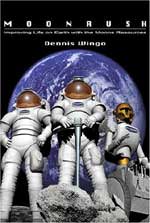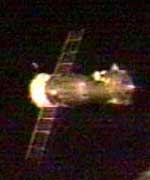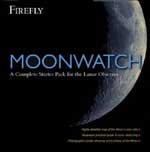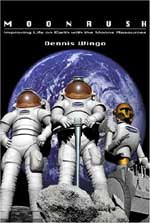Monday, October 25 – The waxing Moon will dominate the early evening skies, but tonight is an excellent opportunity for binoculars and telescopes to explore crater Tycho. Named for Danish astronomer, Tycho Brahe, this fantastic impact crater will be very impressive in even the most modest of optical aids. Spanning 85 km (56 miles), this lunar feature is very prominent and unmistakable in the southern hemisphere of the Moon. Tycho’s highly conspicuous ray systems support its impact crater theory and span hundreds of kilometers across the lunar surface. Tycho is also one of the youngest of the major features at an astounding age of only 50 million years old!
On January 9, 1968 Surveyor 7 (the last lunar robot of its kind) landed quietly on Tycho’s slopes at sunrise. Because previous Surveyor missions had provided the Apollo program with all the data necessary to their goals, Surveyor 7’s presence was scientific only. Two weeks later, when the Sun set on the landing site, Surveyor 7 had provided over 21,000 photographs, determined physical and chemical properties associated with the Southern Highland area and recorded the laser beams aimed toward it from two seperate Earth observatories.
Tuesday, October 26 – Begin your astronomy day by getting up before local sunrise this morning to view the planets. No scope is necessary for this excercise, but it is time to become familiar with the positions of the planets for there will be some excitement involving them coming in the days and weeks ahead. Facing east before local dawn, Venus is unmistakable. Far outshining any star in the sky, Venus will be due east and not too far above the horizon. (note how much brighter Venus appears at -4.0 magntiude than -1.42 Sirius to the south.) Lower yet than Venus on the eastern front, and not nearly as bright is Jupiter. A bit more difficult to spot amoungst the bright stars of the winter constellations, (but not impossible for the novice) is Saturn. Seasoned skywatchers know Saturn is currently in Gemini, but what if you’re new to the game? Try doing this. While facing east, point your finger at Venus then extend your arm straight over your head and ever so slightly to the south. There you will see three “stars” of similar brightness – but only two of these are stars. Castor and Pollux are the two primary stars of the constellation of Gemini and will appear less than a fist’s width apart and slanted slightly from east/southest to north/northwest. About one fist width west and slighly to the south, you will see another “yellowish” star. That’s no star. You’ve just found Saturn! Now, go back to Jupiter and Venus and trace a line between all three and you will begin to understand the ecliptic plane. For rural viewers with a clear, dark and low horizon? A real challenge will be to spot tiny red Mars who is also back on the scene.
Tonight the very gibbous Moon will command the skies and give unaided observers an opportunity to use their imaginations.
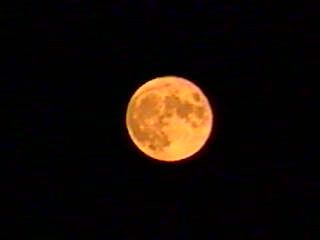
Since the dawn of mankind, we have been gazing at the Moon and seeing fanciful shapes in the lunar features. Tonight as the Moon rises is your chance to catch “The Rabbit In The Moon”. The “Rabbit” is a compilation of all the dark maria. The Oceanus Procellarum forms the “ear” while the Mare Humorum makes the “nose”. The “body” is Mare Ibrium and the “front legs” appear to be Mare Nubium. Mare Serentatis is the “backside” and the picture is complete where Mare Tranquilitatus and Mare Fecunditatis shape the “hind legs” with Crisium as the “tail”.
See the Moon with an open mind and open eyes — and find the “Rabbit”!
For telescopes and binoculars, the lunar surface will provide a bright but superior view of crater Grimaldi. Named for Italian physicist and astronomer, Francesco Grimaldi, this deep grey oval is one of the darkest albedo features on the Moon – only reflecting about 6% of the light. Approximately 430 km (140-145 miles) long, it’s easy to spot along the terminator and just slightly south of the center of the lunar limb. Tonight is the best time to view its mountained walls, for they will disappear and Grimaldi will take on the appearance of a small mare in the light of the full Moon.
Now don’t miss tomorrow!
Wednesday/Thursday, October 27/28 – Tonight’s full moon is also known as the “Hunter’s Moon“, but bright Luna will become the hunted in the starry skies as Earth overtakes it with our shadow… A total lunar eclipse! Because the eclipse will occur across international date lines, we will leave a two day heading for this event. Beginning at 01:04UT (9:04 P.M. EDT) and ending appromately four hours later, the total eclipse offers a wonderfully inspiring event that does not require an optical aid to enjoy. Universe Today will be gathering together a group of astrocameras from around the world with a clear view of the eclipse. Can’t see it in person? Watch it on the Internet with us.
Wishing you all clear skies!
Friday, October 29 – With only a very short time until the Moon rises tonight, take this opportunity to acquaint yourself with the last star in the Summer Triangle – Altair. Facing southwest after local sunset, you will find bright star Alpha Aquilae about 2/3 the distance between the horizon and the zenith for most northern hemisphere skywatchers. As the 12th brightest star in the sky, Altair is also one of our nearest “neighbors” at only 16 light years distance. This main sequence white star is only about one and a half times the size of our own Sol, but nine times brighter. One of the most amazing facts about Altair is its rotation speed. Our own Sun takes 25.4 days to execute a complete orbit, but Altair does it in 6 1/2 hours. Wow!
And speaking of orbit?

On this day in 1961, Enos the chimp, (part of the Mercury-Atlas 2 mission which would attempt three circumnavigations of the Earth) rocketed into outer space and reached orbit. Although two malfunctions occurred during his flight, Enos continued to perform his required operations despite being repeatedly “shocked” instead of “rewarded”. When the Atlas rocket’s thruster system malfunctioned, Mission Control ended his flight after two complete orbits of the Earth. Three hours and 21 minutes after his flight began, Enos re-entered the Earth’s atmosphere and landed safely in the Atlantic Ocean. NASA elevated the chimp’s status to hero and thanks to Enos, mission managers now proclaimed space travel as “safe” for human astronauts!
Tonight’s lunar feature for telescopes and binoculars will be crater Langrenus. Named for Belgian Engineer and Mathematician, Michel Florent van Langren, crater Langrenus will be easily found along the terminator slightly south of center. Its 132 km (85 mile) expanse will appear shallow with a bright central peak.
Keep your binoculars and telescopes handy for later in the evening (21:00 UT), for as the Moon rises higher and higher in the sky, you will find M45 (more commonly known as the “Plieades”) only 1.7 degrees north of the Moon. Make note of the Plieades position, for we will visit it, and its history in two days.
Saturday, October 30 – Tonight many communities around the world will celebrate “Trick Or Treat”, but the real treat for adults will be to give your visitors a view through a telescope. Even if you do not celebrate the season, what’s in store is truly “eye candy” for all ages. Beautiful, bright and colorful, Beta Cygni is an excellent example of an easily split double star. As the second brightest star in the constellation of Cygnus, Albireo lies roughly in the center of the “Summer Triangle” making it a relatively simple target for even urban telescopes.
Albireo’s primary (or brightest) star is around magnitude 4 and a striking orangish color. Its secondary (or B) star is slightly fainter at a bit less than magnitude 5 and often appears to most as a violet blue. Their wide separation of 34.3″ make Beta Cygni an easy split for all telescopes at modest power and even larger binoculars. At approximately 410 light years away, this colorful pair shows a visual separation of about 4400 AU, or a bit over 400 billion miles. As Burnham noted, “It is worth contemplating, in any case, the fact that at least 55 solar systems could be lined up, edge-to-edge, across the space that separates the components of this famous double!”
For those of you who interested in staying up later to “Moon Watch” with telescopes or binoculars, tonight will be a great opportunity to catch Mare Crisium. During this particular phase, Crisium will be on the decline and the position of the terminator will make it appear as if a giant “bite” had been taken off the edge of the Moon.
As the Moon rises, you will notice that Selene is now forming a triangle with Aldebran (Alpha Tauri) and the M45 (the “Plieades”). For those of you with a sense of humor while you’re outdoors? Turn on your radio and imagine the voice of Orson Welles – because “War Of The Worlds” was broadcast on this date in 1938!
Sunday, October 31 – Happy Halloween! Tonight’s astronomical adventure will be about exploring an ancient and well reknowned star cluster associated with this holiday that we’ve kept track of all week — the Plieades! Easily found from a modestly dark site with the unaided eye, the Plieades can be spotted well above the north-eastern horizon within a couple of hours of nightfall. To average skies, many of the 7 bright components will resolve easily without the use of optical aid, but to telescopes and binoculars? The M45 is stunning…

First let’s explore a bit of history. The recogntion of the Plieades dates back to antiquity and it’s known by many names in many cultures. The Greeks and Romans referred to them as the “Starry Seven”, the “Net of Stars”, “The Seven Virgins”, “The Daughters of Pleione” and even “The Children of Atlas”. The Egytians referred to them as “The Stars of Athyr”, the Germans as “Siebengestiren” (the Seven Stars), the Russians as “Baba” after Baba Yaga, the witch who flew through the skies on her fiery broom. The Japanese call them “Suburu”, Norsemen saw them as packs of dogs and the Tonganese as “Matarii” (the Little Eyes). American Indians viewed the Plieades as seven maidens placed high upon a tower to pretect them from the claws of giant bears, and even Tolkien immortalized the stargroup in the “Hobbit” as “Remmirath”. The Plieades have even been mentioned in the Bible! So, you see, no matter where we look in our “starry” history, this cluster of seven bright stars has been part of it.
But let’s have some Halloween fun!
The date of the Plieades culmination (its highest point in the sky) has been celebrated through its rich history by being marked with various festivals and ancient rites — but there is one particular rite that really fits this occasion! What could be more spooky on this date than to imagination a bunch of Druids celebrating the Plieades midnight “high” with Black Sabbath? This night of “unholy revery” is still observed in the modern world as “All Hallow’s Eve” or more commonly as “Halloween”. Although the actual date of the Plieades midnight culmination is now on November 21 instead of October 31, why break with tradition? Thanks to its nebulous regions the M45 looks wonderfully like a “ghost” haunting the starry skies.
Treat yourself and your loved ones to the “scariest” object in the night. Binoculars give an incredible view of the entire region, revealing far more stars than are visible with the naked eye. Small telescopes at lowest power will enjoy the M45’s rich, icy-blue stars and fog-like nebulae. Larger telescopes and higher power reveal many pairs of double stars buried within its silver folds. No matter what you chose, the Plieades definately rocks!
(For those of you tempted to stay up later since Daylight Savings ends tonight? I’ll see you on the light side of the Moon as crater Hercules will be making a fine appearance.)
Until next week? Keep looking up! I wish you clear skies and light speed…~Tammy Plotner

